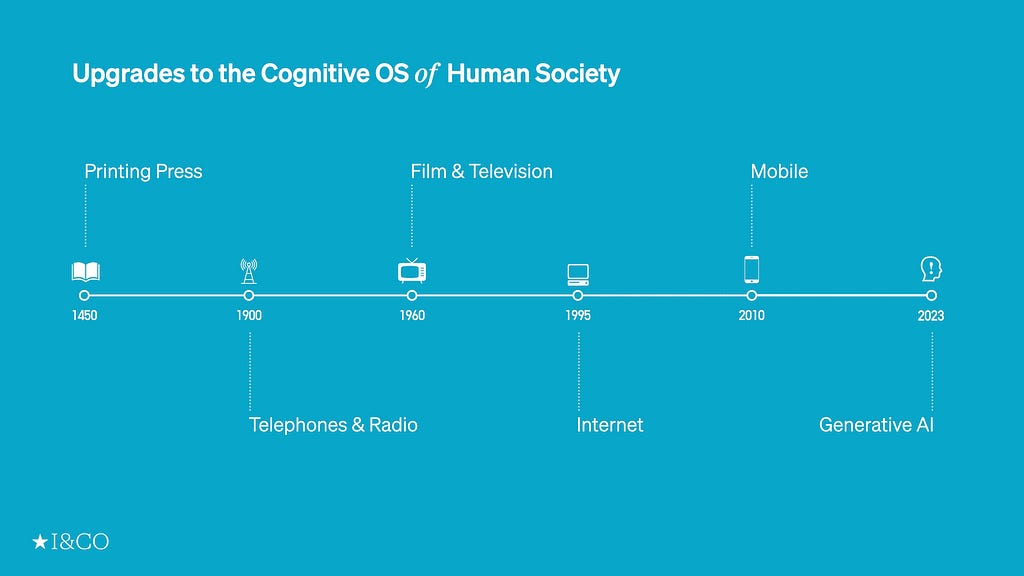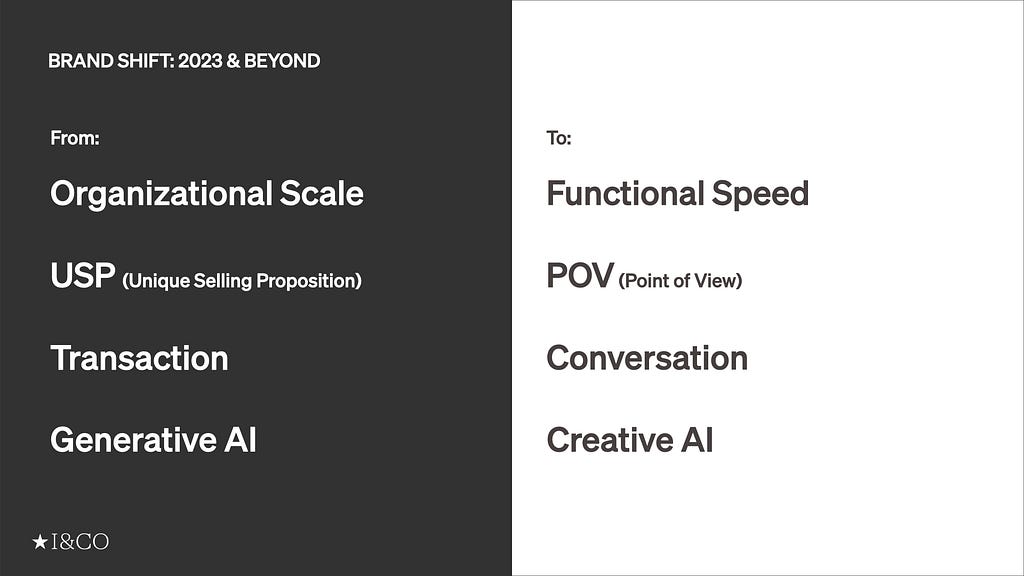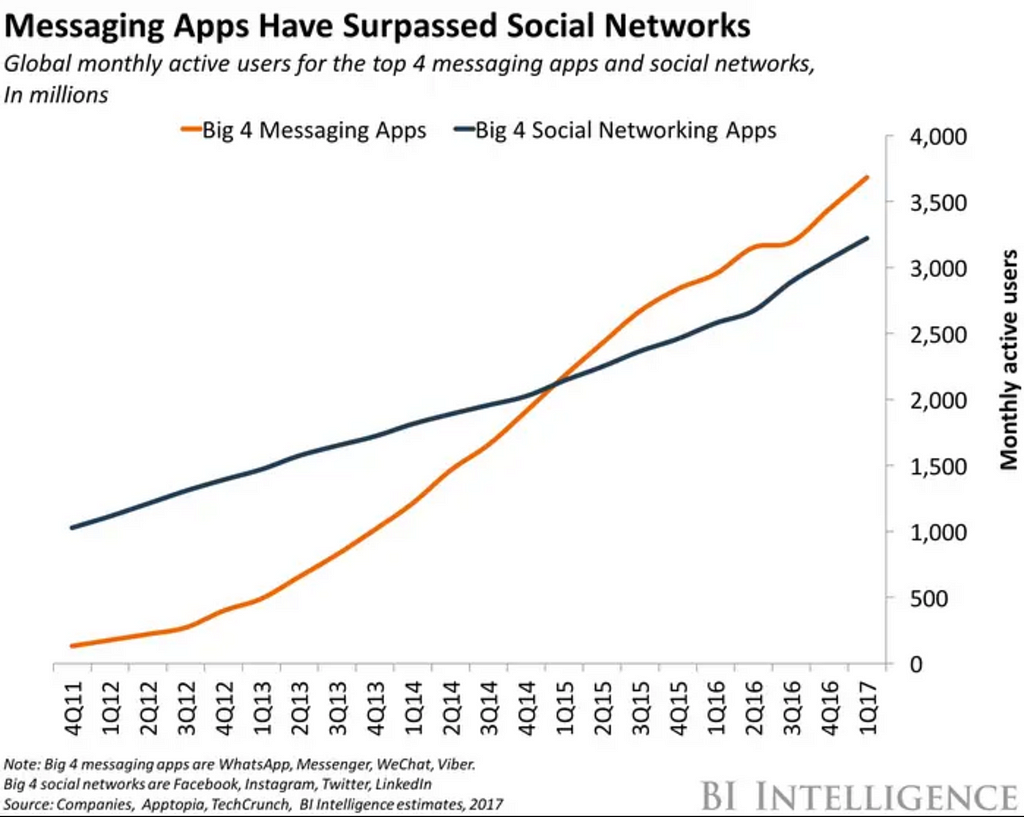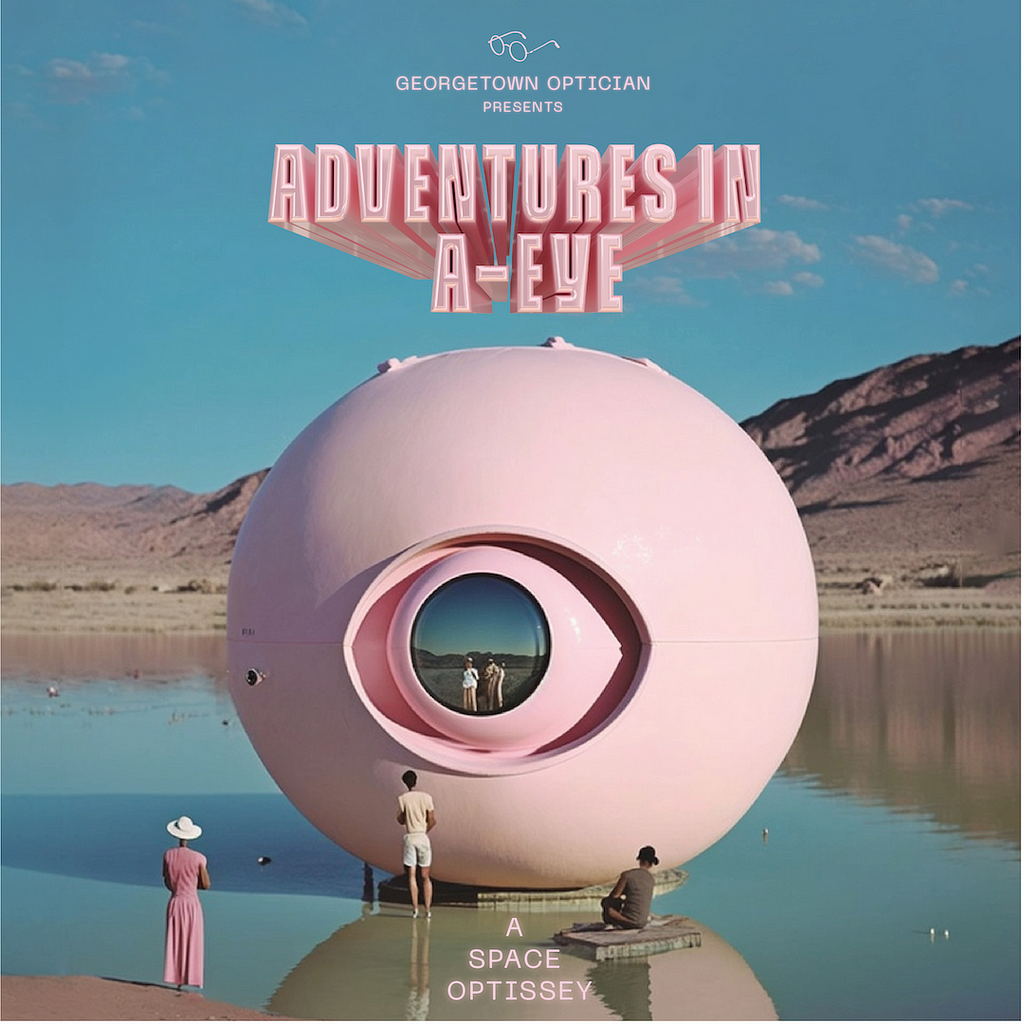The End of Brands As We Know Them
The evolution of brands and creativity in the age of AI.

In her early thirties with two kids, Ayako Tanaka is a Japanese Instagrammer with a focus on fashion and motherhood. She has 168k followers on Instagram, a respectable but modest following compared to numerous influencers with many more followers these days.
Not too long ago, she curated a two-day pop-up shopping event during which she supposedly generated as much revenue as a flagship store of a major international apparel brand would on its opening day.
A decade ago, an individual with adequate reach selling as much as a major brand with an ample amount of awareness was inconceivable. What happened over the last decade that makes this possible now?
Back in 2013, I wrote an article called “The End of Advertising as We Know It — and What to Do Now” in which I observed several paradigm shifts marketers and brand builders needed to embrace in order to prepare for the impact we would see in the near future. In the subsequent years, those shifts drove a structural change in how we perceived brands.
Now in 2023, when individuals can outsell institutions, it may be the end of brands as we know them.
With the arrival of generative AI, we find ourselves in the midst of another structural change. Put another way, it’s as if the operating system of human civilization is going through an upgrade right before our eyes.
Upgrades to Our Cognitive OS
Japanese historian and podcaster, Ryunosuke Fukai, argues that “the Cognitive OS of human society” goes through an upgrade when there is an advancement in information communications technology:

- The printing press in the 15th century
- Radio and telephones in the late 19th century
- Film and television in the early and middle parts of the 20th century
- The Internet from the late 20th century to the first decade of the 21st century
- The proliferation of mobile devices in the second decade of the 21st century.
These technologies have formed, influenced, and even distorted the way we perceived the world, upgrading our Cognitive OS.
In recent years, we saw the rise of several newish technologies that seemed like upgrades to our OS. One was NFTs, another was the metaverse. To many, these held enough potential that billions were invested, new businesses were formed, and some companies were even rebranded (ok, maybe one company). Perhaps these were frenzies and blips caused by a bug in the system: the coronavirus. Time will only tell whether these were mere malfunctions or just too early for our society to adapt. For now, they were and are not the upgrades that some thought they were.
Instead, what seems to be triggering the real upgrade to our civilization is AI, specifically, generative AI.

To keep up with the next upgrade to our Cognitive OS of human society, here are four paradigm shifts that can guide us from the Connected Age to the Intelligent Age.
1. From Organizational Scale to Functional Speed
NYU Stern School of Business professor Scott Galloway writes in his book and on his blog Post Corona that “[American Football] Hall of Fame wide receiver Jerry Rice wasn’t that fast, but he had ‘functional speed,’ the instincts to accelerate or decelerate when it mattered most.”
Companies, particularly in the tech sector, have been praised for mainly one thing: growth. However, AI will allow companies of all sizes and individuals to scale and speed themselves in ways that weren’t possible before, rendering Organizational Scale less praiseworthy than previously.
Take OpenAI and Google for example. OpenAI had been around for several years, but it was not a household name by any stretch of means. The release of ChatGPT in late 2022 changed that overnight and all of a sudden, the behemoth that is Google got caught on its back foot.
Or so it seemed.
Within less than six months, Google announced a slew of AI products and developments, taking back control of the AI narrative. Google realized it needed to accelerate immediately.
Another example is Adobe. Adobe may not have dominated the headlines as much as GAFAM have but it has quietly and steadily evolved over the years to stay relevant. Just as generative AI tools such as DALL·E, Midjourney, and Stable Diffusion were making waves, Adobe countered with Firefly. While most generative AI tools are only text-based features, Adobe, an old and possibly stale software giant, is now quickly integrating those features into existing image-based software such as Photoshop seamlessly, accelerating its relevance effort in real-time.
It is important to note, however, that Functional Speed doesn’t belong just to tech giants like Google and Adobe.
During the COVID-19 pandemic, one of the businesses that got hit particularly hard is restaurants, forcing even the most well-regarded establishments to shut down. One of the restaurants that survived the pandemic by turning on its Functional Speed is Narisawa, a Michelin-star restaurant in Tokyo that’s ranked in the highly coveted World’s 50 Best Restaurants list consistently. The restaurant was known for the originality and theater of its presentation at the restaurant, which obviously wasn’t of much use when restaurants were legally forced to close.
Chef Narisawa quickly redirected his staff to turn their elaborate culinary creations into omakase bento boxes that were delivery-friendly yet highly exclusive: he priced these boxes at more than $100 per person, a premium price that could potentially detract many customers. He reasoned that even during the pandemic when people couldn’t go out, they still had occasions to celebrate and deserved to experience high-end meals at home. While staying true to his philosophy, Chef Narisawa accelerated the speed of his business when it mattered most.

2. From Transaction to Conversation
Since the arrival of e-commerce in the 1990s, the basic mode of online shopping has stayed largely unchanged. This mode has centered around three actions: searching, filtering, and selecting, making the nature of e-commerce between a business and a customer transactional. Chatbots, originally called chatterbots, have been around since 1994 but their viability has been dubious and frustratingly inadequate.
Last fall, ChatGPT surprised the world by showing that natural conversations between humans and machines could be convincingly realistic. It’s suddenly become easy for anyone to imagine that services such as online customer support and chats can now be replaced by AI. What used to be purely transactional can be more conversational, possibly strengthening the connection between the business and the customer.
It turns out that the shift from Transaction to Conversation had been happening for a while. Social networks and messaging services have both been growing steadily for the better part of this century. Since 2013, however, the growth of messaging started to gain momentum. In 2015, the number of active users of Big Four messaging apps (WhatsApp, Messenger, WeChat, Viber) surpassed that of Big Four social networking apps (Facebook, Twitter, Instagram, LinkedIn).

When asked what people value most in their customer experience and will pay more for, “efficiency,” “convenience,” and “easy payment” rank high. At the same time, “friendly service” and “knowledgeable service” score equally high, indicating that it’s not just the transactional aspects of commerce that people value.
It’s already possible for us to have fairly natural conversations with AI on just about anything. In the next few years, it will be entirely possible for machines to provide friendly and knowledgeable services that are as good as, if not better than, those provided by humans in the form of conversations.
Aim for effectiveness, not just efficiency, in every transaction with your customer.
3. From USP to POV
By definition, a Unique Selling Proposition (USP) is “the feature or the perceived benefit of a good which makes it unique from the rest of the competing brands.”
It was coined by Rosser Reeves, a pioneer in the American advertising industry in the 1940s. For more than half a century, it has been one of the golden rules among American marketing professionals.
In the case of Chef Narisawa, he has been using techniques that allow you to enjoy Japanese food culture in authentic yet imaginative ways for many years. His cooking technique is his USP.
However, as we move from the Connected Age into the Intelligent Age, it is increasingly becoming easier to mimic and copy others blatantly. With generative AI, not only can one simply copy prompts and get similar outputs instantly, but also they could ask AI to reverse engineer how things are made.
It was important for Chef Narisawa to have superb techniques as a chef, but before that, he always had a clear Point of View (POV) for his cuisine. It was on the idea of conserving nature, which he called Satoyama Cuisine.

One of his signature dishes is called “The Soil Soup.” In order for ingredients to be truly sustainable, the environment in which they are grown, say soil, needs to be so pure and so clean that we should be able to eat it, he reasoned. This soup is made from burdocks and a mix of soil in which they are grown, and it looks like how it sounds. This is how Chef Narisawa expresses his POV through his culinary creations.
High-end gastronomy is not suitable for takeout or delivery. However, Chef Narisawa’s POV, which captured gastronomy and environmental issues in the same context, remains unchanged for many years and even during a pandemic. Chef Narisawa, with his conviction in Satoyama Cuisine, designed not only a menu fit for high-class takeout and delivery, but also a series of original packaged ingredients that could be sold online. This led to the creation of a new line of business for Restaurant Narisawa.
Another case in point is Ayako Tanaka, the aforementioned fashion Instagrammer in Japan. Major apparel brands have far more reach and awareness in the mass market, therefore, setting themselves up to sell way more than an individual Instagrammer. Hypothetically.

But the fact that she is able to generate the kind of revenue that was only possible for major brands less than ten years ago shows the structural change we are witnessing. The power dynamic is shifting from institutions to individuals. Her followers/fans buy into her POV, thus they buy products because they are endorsed by her.
4. From Generative AI to Creative AI
The good news with generative AI is that “the space between your idea and execution has been collapsed to a second,” as Nick Law, the former CCO of R/GA, and an old colleague of mine, puts it. People no longer need years of training to create technically advanced imagery and that has now raised the quality of what we previously perceived as average. The bad news? “It’s clear mediocrity is now free. People that have no discernible artistic talent can create something that’s actually pretty good.” Or maybe that is the good news. It. Doesn’t. Matter.
Many people talk about the creativity, imagination, and life experiences of humans that AI can’t replicate. Just look at the picket signs of the writers’ strike going on. But resistance is futile, so how specifically should we partner with AI to make the impossible possible?
First, reach.
Hybe, the Korean entertainment juggernaut behind enormously successful BTS and other K-pop groups, recently announced the first single “Masquerade” from MIDNATT, a new artist that the label is backing (it turned out that MIDNATT is an alter ego of Lee Hyun, a longtime staple of Korea’s music scene who has been with Hybe since 2005). What was new and special about this debut song is that it was produced in six different languages: Korean, English, Japanese, Chinese, Vietnamese, and Spanish.
You can read the details of how Hybe and MIDNATT produced this in this Fast Company article but it’s a great example of partnership between humans and machines. By releasing the song in multiple languages, Hybe is enabling the kind of reach for its artists that wasn’t possible a few years ago.
Second, efficiency.
When I asked my friend Pum Lefebure, the co-founder/CCO of Design Army, about her recent campaign work “Adventures in A-Eye” for Georgetown Optician, what struck me most was how the creative process can change and speed up dramatically.

For “Adventures in A-Eye,” it took a week of Pum-and Pum only-to type in a bunch of prompts into Midjourney to generate the initial idea. In a week or so, the campaign was more or less fully visualized and she was able to present almost finished work. The following two to three weeks, she worked with her team to finesse how the glasses and typography would be represented in the final imagery, taking merely four weeks for the whole process.
Typically, the process to develop a campaign of this caliber and quality from idea to execution takes several months, many people, and quite possibly half a million dollars.
Pum didn’t tell me how much the client paid for this campaign (I asked) but she did say “Clients need to pay. What they will be paying for is my eye, taste, and talent based on several decades of experience. When I gave the same brief to younger designers, the outputs weren’t as good.”
This is possibly good news for middle-aged creatives (and Writers’ Guild of America): Instead of fighting against this tidal wave of generative AI, learn how to surf and gain the kind of creative edge you didn’t have before.
Third, magic.
This is the most important aspect of Creative AI and probably the most elusive. But what’s behind magic is logic. Magic is about using logic to create an illusion and wow people. AI is quickly taking away from humans the work of generating and even crafting something. So the job that’s left for humans is to imagine what magic to create.
“McEnroe vs. McEnroe” is one recent example of that. On one side of the court is the real, 64-year-old McEnroe, and on the other side, we see a younger but hologram version of himself. This younger McEnroe is generated based on his performance data over the years that AI software gathered and learned. This then is fed to a robot (imagine a batting cage robot) on the darker side of the court. This robot reacts in real-time to the ball that the real McEnroe hits and throws back, as if the younger hologram McEnroe is hitting back, creating the illusion of the real and older McEnroe vs. the virtual and younger McEnroe.
While Generative AI is about the machine mimicking what humans do and doing them faster and better, Creative AI is about humans imagining the magic and using the machine to generate it.
In sum, as the cognitive operating system of our civilization is going through an upgrade, brands need to embrace these four paradigm shifts in order to stay relevant:
- From Organizational Scale to Functional Speed
- From Transaction to Conversation
- From USP to POV
- From Generative AI to Creative AI
Accelerate when it matters most. Treat every transaction as an opportunity to help your customer effectively, not just efficiently. Know your conviction with a clear POV. Combine and recombine things to create magic.
Not only has the space between your idea and execution collapsed, but so has the space between institutions and individuals. Building a brand has now become accessible to anyone and everyone. And that is why it also has gotten that much more competitive. Fiercely so.
Say hello to the Intelligent Age.
The End of Brands as We Know Them was originally published in UX Collective on Medium, where people are continuing the conversation by highlighting and responding to this story.
Looking for cool gifts? Check Rott515 store!
